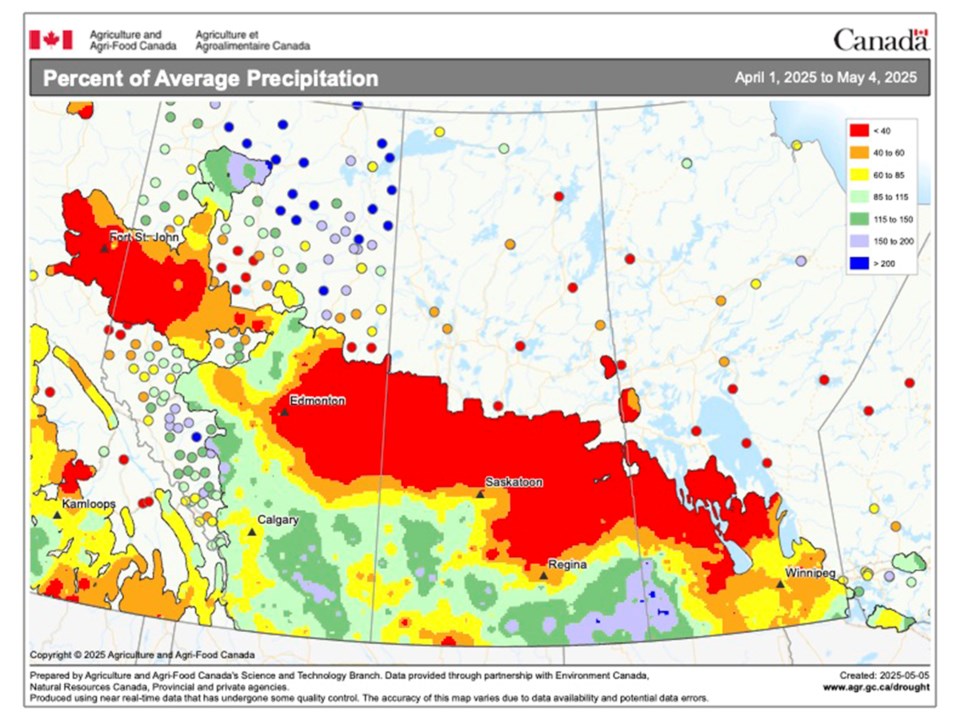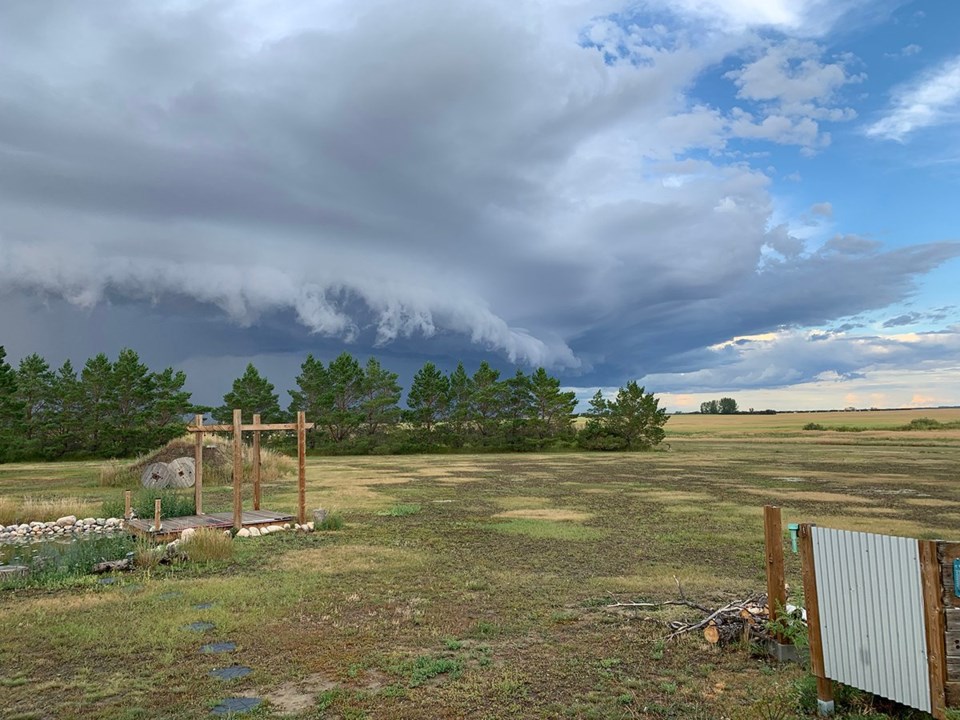WESTERN PRODUCER — Severe thunderstorms need rising air, and to get that you need heat, or rather, you need a large difference in temperature between two areas.
Many people associate thunderstorms with a very hot day, but just having one of those does not mean that there is a large difference in temperature.
To get thunderstorms on a hot day, you need to have cool air aloft.
When hot air at the surface begins to rise, it cools. If the air surrounding the rising parcel of air remains colder than the rising parcel, that rising parcel will continue to rise. The colder the air around the parcel, the faster it goes up; the faster it goes up, the stronger the storm (typically).
Now, sometimes we can get severe thunderstorms when we don’t have particularly warm air at the surface.
Two scenarios can play out when this happens that can still lead to severe thunderstorms.
One scenario would be that there is very warm air a few thousand feet up from the ground. This warm air then has cold air above it, and just like the hot day on the ground, this warm air in the upper atmosphere can rise, giving us elevated thunderstorms.
We typically see these types of storms in the spring, but we can experience them any time during the summer and fall.
The other scenario is when there is a strong contrast of warm and cool air at the surface, or in other words, we have some type of front cutting through an area.
On one side of the front, it is cold, and on the other side it is warm. The cold air acts like a wedge and forces the warm air up.
Sometimes when warm air is moving into a region, storms can develop as the warm air rises over the cool air as it moves into the region.
Now, simply having a big difference in temperatures will not give you a thunderstorm, or at least, will not give you a severe thunderstorm. There are still a couple more ingredients needed.
The next key ingredient is water vapour, or humidity.
As you know, it takes energy to evaporate water, so the more water vapour there is in the air, the more potential energy there is.
Our rising air is cooling as it rises, but not as fast as the air around it, so it continues to rise.
Then, condensation starts taking place, which releases heat into the air. This makes our rising air even warmer than the air around it, so it rises even faster.

This map shows the amount of precipitation that has fallen across the Prairies since April 1 as a per cent of average. It has been a very dry period across much of the northern and eastern agricultural regions stretching from southern Manitoba northwestward into Alberta’s Peace River region. The only above average area was southeastern Saskatchewan and extreme southwestern Manitoba.
Now it is starting to sound like we have everything in place for a severe storm, but not quite.
If you have air continually rising, eventually the amount of air accumulating up at the top of the storm will become so great that it just has to fall back down again, wiping out the storm in the process.
To get around this problem, we need some kind of vent at the top of the storm to take away all the rising air that is accumulating there. We need a strong jet stream of air over top of the storm, which will help to “suck” away the accumulating air.
We now have the main ingredients in place for a severe thunderstorm to develop, but there are still other factors that can come into play. More about these in coming issues.
Daniel Bezte is a teacher by profession with a BA in geography, specializing in climatology, from the University of Winnipeg. He operates a computerized weather station near Birds Hill Park, Man. Contact him at [email protected].
About the author
Related Coverage
Weather models predict hot summer
There are many types of precipitation
Super-cooled water reigns on Prairies
Chinese tariffs could mess with U.S. soybean plans
Crunching the winter weather data

